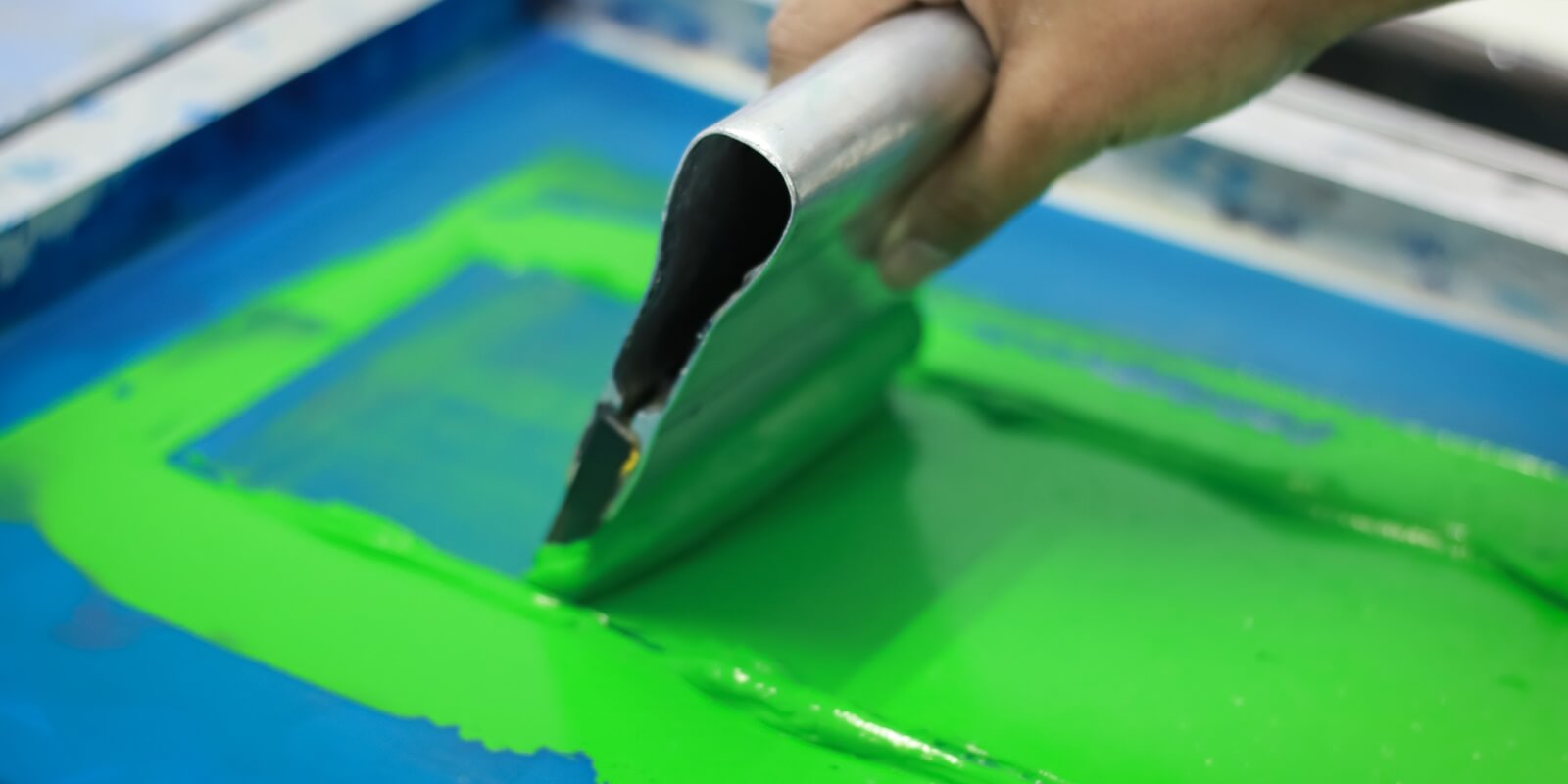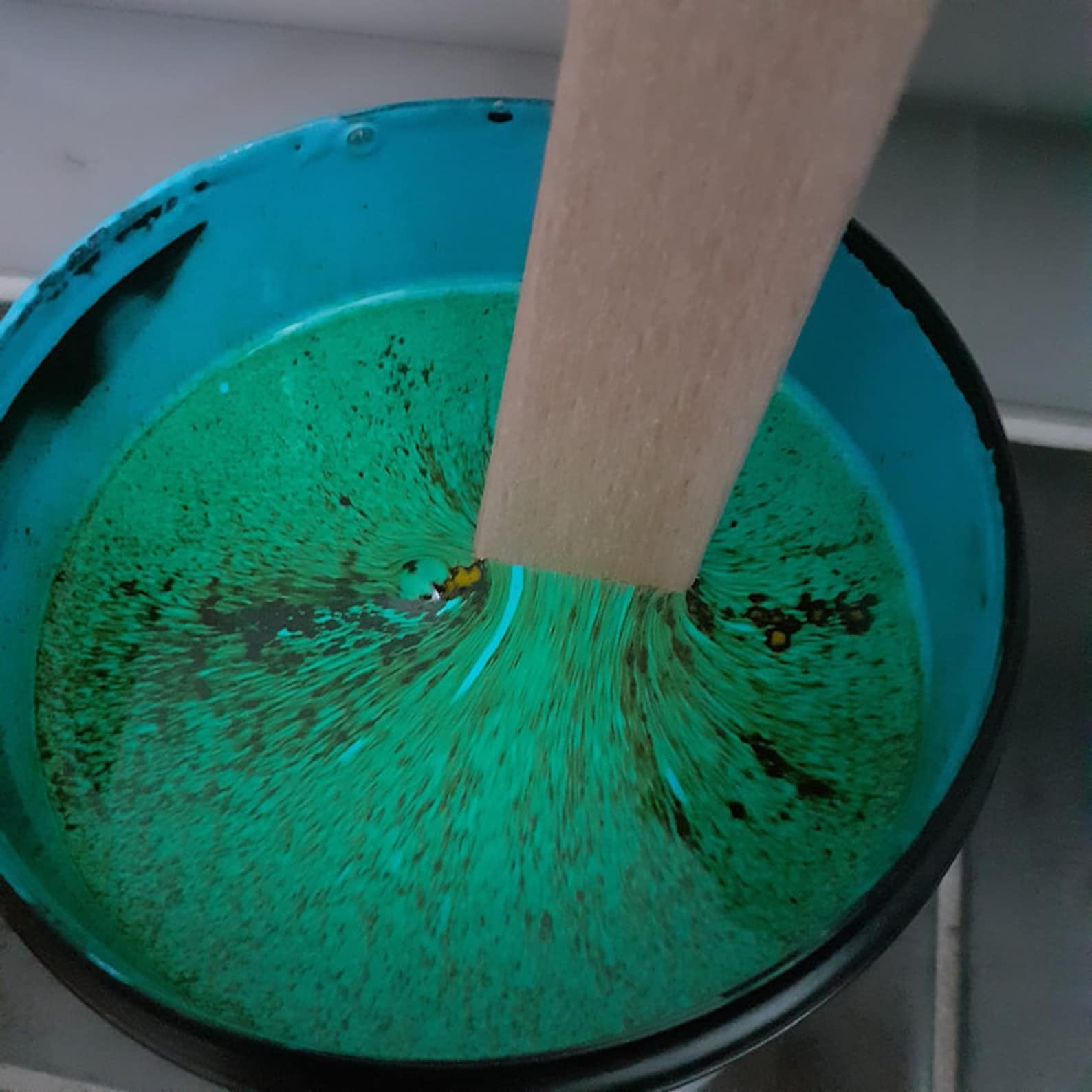Screen Printing Emulsion eBay
An emulsion is a type of mixture that is made up of two or more liquids that do not naturally mix together. Emulsions are used in a wide range of applications, including food, cosmetics, and paints. Emulsifiers are used to stabilize the mixture and prevent the liquids from separating. The emulsion is also a key component in the screen printing.

How to Expose Photo Emulsion for Silk Screen Printing 15 Steps
Screen printing emulsion is essentially a light sensitive glue used for creating a stencil on screen mesh. The emulsion is coated on the screen with a scoop coater or an automatic coater. Once the screen is dry it is ready to be exposed. Emulsions are available in three basic types: diazo, dual cure, and pure photopolymer.

Screen Printing Emulsion HD Plus7000 1000ml Keygadgets
Photo Emulsion Kit for Screen Printing. Ulano's unique pre-sensitized hybrid emulsions, QX-1, QX-3 QX-5 deliver the durability and excellent imaging properties of dual-cure technology with the ready-to-use convenience, fast exposure speed, and extended pot life of pure photopolymer (SBQ) emulsions.. Ulano offers some of the best emulsion for water-based inks.

Best Emulsion For Screen Printing Top Emulsion Review of 2020 Top Compared
Marketing Manager. Murakami Screen USA. Jan 2006 - Present 17 years 11 months. Currently I'm actively expanding the marketing scope of Murakami Screen and traveling as a technical representative.

What Is Emulsion Screen Printing?
Coating your screens with emulsion can be a tricky part of the screen printing process, but it's not impossible by any means; just keep these guidelines in mind and you'll be coating screens like a pro in no time. The process can be referred to either as "coating a screen" or "making a stencil".

The BEST photo EMULSION for screen printing [Reviews 2023]
Screen printing emulsions Is a light-sensitive liquid substance that creates an ink-resistant border around your image. Since all liquid emulsion and emulsion sheets (capillary film) are light-sensitive, application should be done in a darkroom or under ultra-violet (U.V.) safe lights. Sort by Show 24 36 48 View as

A One Emulsion For Screen Printing at Rs 100/kilogram Screen Printing Chemicals ID 18675123112
Photo emulsion screen printing is a method that involves transferring a design onto a screen using light-sensitive emulsion. This technique allows for precise and intricate designs to be printed on a variety of surfaces, including paper, fabric, wood, and more. Unlike other printing methods, such as block printing or digital printing, photo.

Best Emulsion For Screen Printing Top Emulsion Review of 2020 Top Compared
Quart Emulsion 13 products A great print needs a high-quality stencil. To make that high-quality stencil, you need a high performance emulsion. Browse the selection of emulsions and chemicals offered by Baselayr. With three emulsion options, Baselayr makes emulsion simple.

Buy Ecotex® AP Blue Screen Printing Emulsion (Quart 32oz.) Pre Sensitized Photo Emulsion for
Central to the screen printing process is the use of emulsion—a light-sensitive liquid that coats the screen and aids in the creation of a stencil. This ultimate guide will walk you through the ins and outs of screen printing emulsion, providing helpful tips, tricks, and insight along the way.

The BEST photo EMULSION for screen printing [Reviews 2023]
Screen printing emulsion is a type of coating that creates the stencil, i.e., defining the areas where the ink will pass through during the printing process. At the same time, it must block the areas where ink is not intended to transfer, resulting in precise and high-quality prints. What is emulsion in screen printing made of?

Screen Printing Emulsion Dirasol Screen Emulsion Wholesale Trader from Pune
In screen printing, an emulsion is a liquid substance that is typically sensitive to light and that generates an ink-resistant frame around a design. An emulsion can also come in the form of sheets (capillary film). Given its sensitivity to light, emulsion should only be applied under ultraviolet (UV) light or in a dark room.

The BEST photo EMULSION for screen printing [Reviews 2023]
Screen printing emulsion is just one of many variables that confront screen printers each day. In the battle to keep the consumer wardrobe adequately stocked with t-shirts we explore the role of screen printing emulsion as it relates to getting ink onto a shirt in an efficient and professional way.

The BEST photo EMULSION for screen printing [Reviews 2023]
Screen Printing Emulsion FAQs 1. I'm a beginner using water-based inks. What kind of screen printing emulsion should I buy? 2. How many coats of emulsion should I have on each side of the screen? 3. Can I coat emulsion on only one side of the screen? 4. How long should I let my coated screen dry? 5. Is a dark room necessary to coat my screens? 6.

Screen Printing Emulsion and Emulsion Remover Value Set Etsy
There are a couple of different types of emulsions screen printers can use. Presensitized emulsion is highly sensitive, exposes quicker, has a longer shelf-life, and captures fine detail beautifully. Dual-cure emulsion relies on diazo to make it sensitive to light. Adding diazo creates a six-week shelf life for dual-cure emulsions.

The Different Types of Screen Printing Emulsion and Which to Use YouTube
In screen printing, there are three different types of emulsions, based on the photosensitizers used. Diazo is so-called because it contains benzene diazonium; SBQ-based emulsions make use of Styryl Basolium Quaternary; dual-cure emulsions contain both diazo and SBQ. Diazo emulsions require the manual mixing of the photosensitizer with the resins.

Best Emulsion For Screen Printing Top Emulsion Review of 2020 Top Compared
Method 1: Apply one coat of emulsion on the printing side, then one coat on the squeegee side. Dry the screen thoroughly. Method 2: Apply two coats on the printing side, then two coats on the squeegee side, without letting the other side to dry. After each coating, rotate the screen 180°.